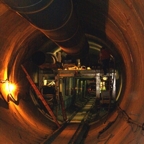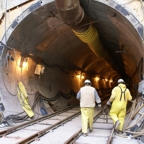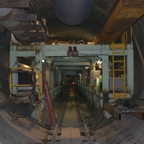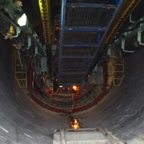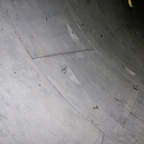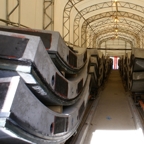| Home |
| Water System |
| Sewer System |
| Harbor and Bay |
| School Program |
| About MWRA |
| Doing Business with MWRA |
| Contact MWRA |
|
ABOUT THE PROJECT
The South Boston CSO Control Project will virtually eliminate combined sewer overflows and stormwater discharges to the beaches in South Boston.
The project includes four new facilities:
- a tunnel,
- an odor control facility,
- a pump station and
- a force main
When the project is complete, beach closings will be a very rare occurrence - only about once every 5 years.
WHY THIS PROJECT IS NEEDED
For decades, combined sewer overflows have discharged about 21 times a year at six outfalls along South Boston beaches. This project will eliminate CSOs to these beaches, except in a catastrophic storm event. Stormwater drains also discharge to the South Boston beaches every time it rains - about 95 times a year. The project will prevent stormwater discharges in up to a 5-year storm.
HOW THE PROJECT WILL WORK
During wet weather, CSO and stormwater flows will be stored in the tunnel until the storm subsides. The tunnel will then be pumped out through the force main and the flows will be sent to Deer Island for treatment and discharge.
RELATED PROJECT
The Morrissey Boulevard Storm Drain project is being designed and constructed by the Boston Water and Sewer Commission under agreement with MWRA.
ABOUT THE TUNNEL
The 17-foot diameter, 2.1-mile-long soft ground tunnel will hold 19 million gallons of combined sewer overflows and stormwater, eliminating discharges to the beaches in South Boston. Mining was completed in August 2008. The $148 million project has been constructed by a joint venture of Shank/Balfour Beatty/Barletta.
|
|||||||||||||||||||||||||||||||||||||||||||||||
|
|||||||||||||||||||||||||||||||||||||||||||||||
Visit the MWRA CSO Main Page for more information about Combined Sewer Overflows and efforts to control them in Boston, Cambridge, Somerville and Chelsea.
Updated January 30, 2009
